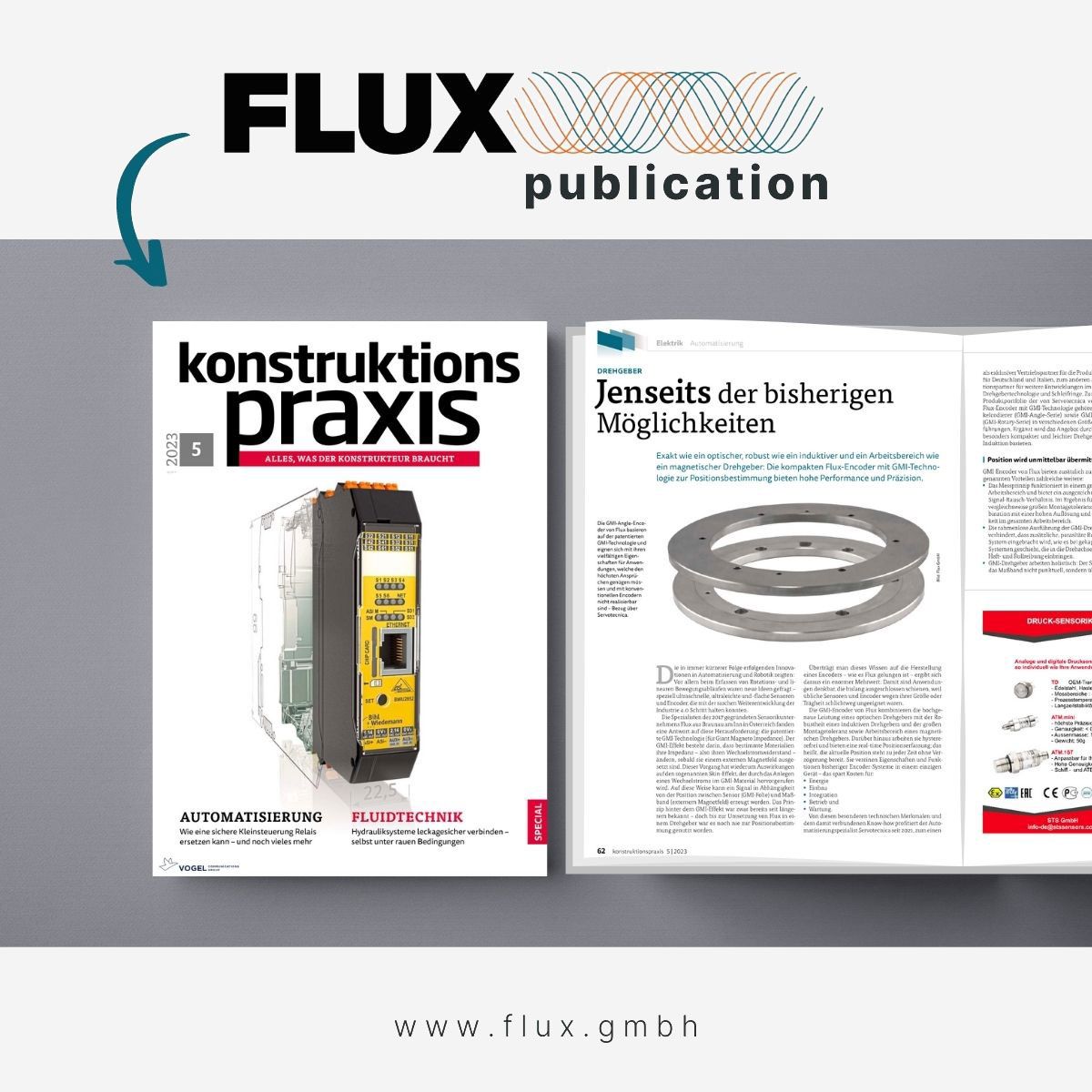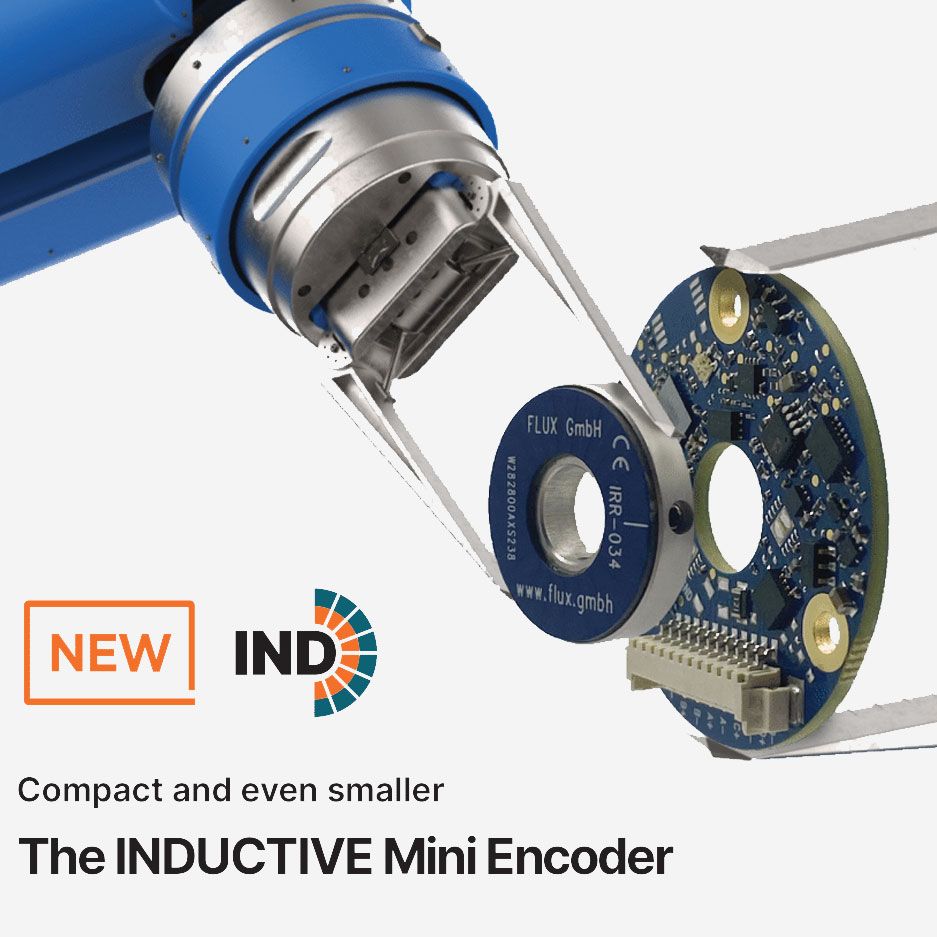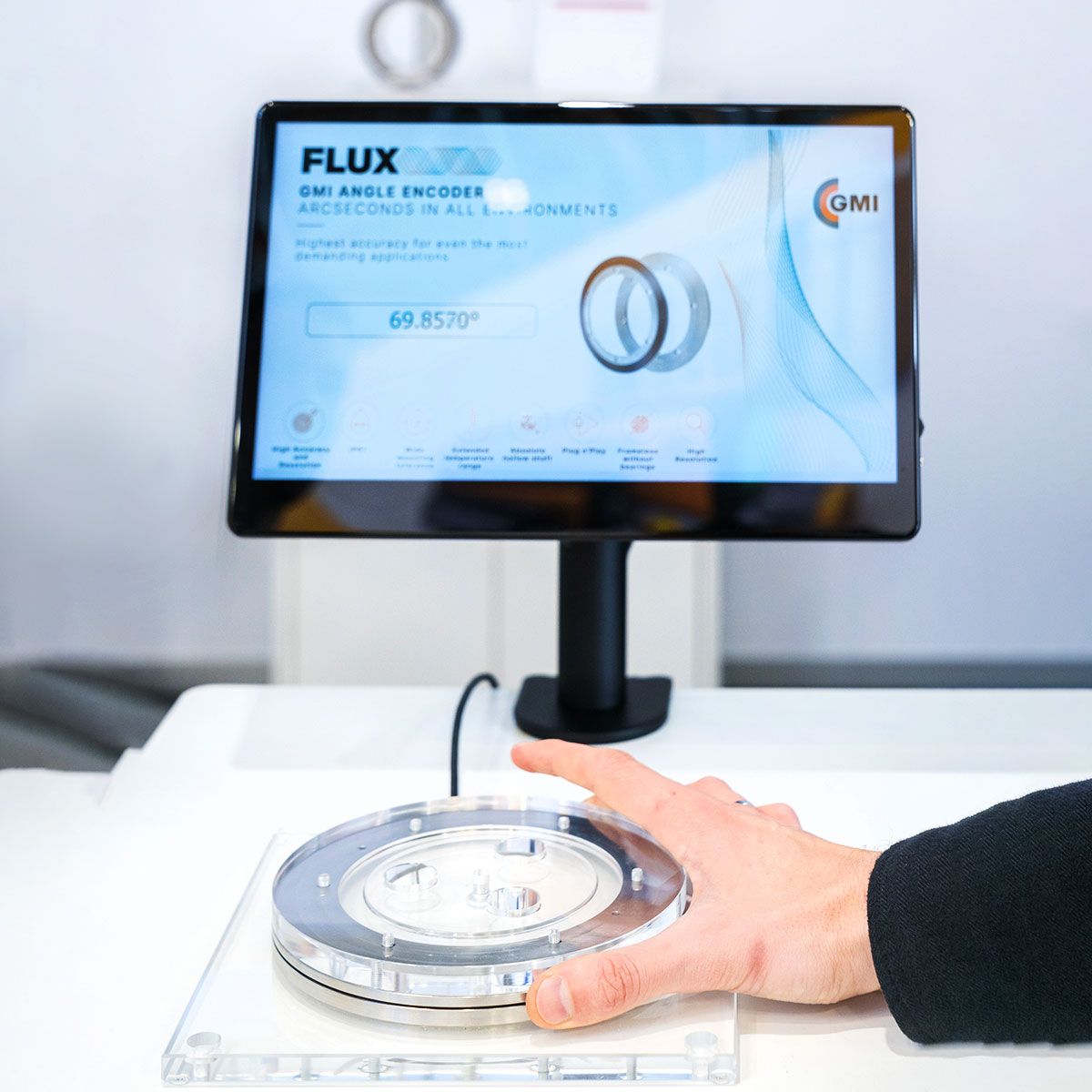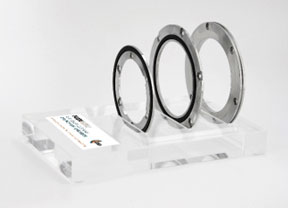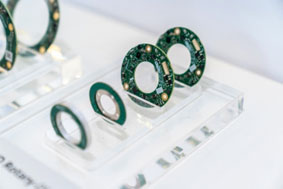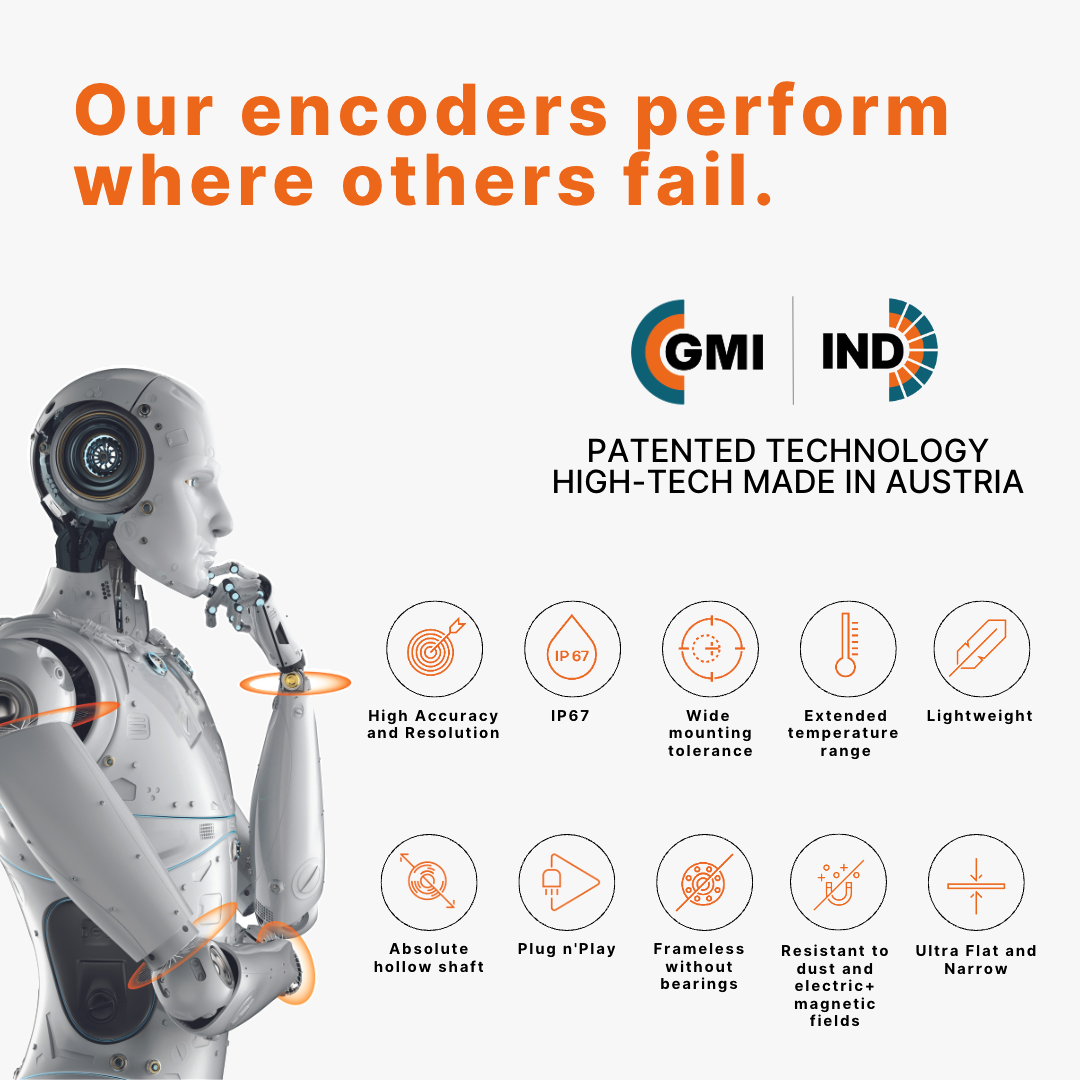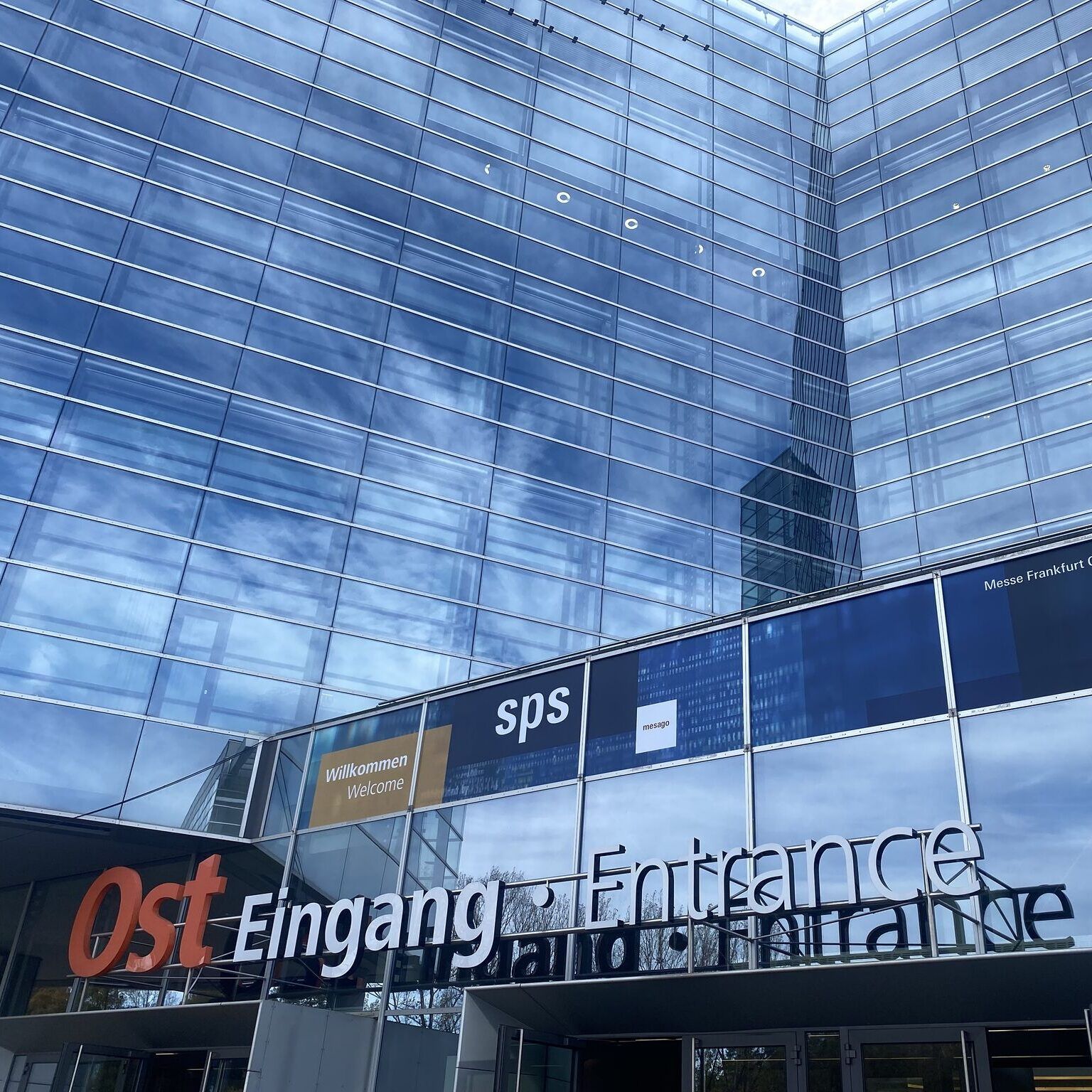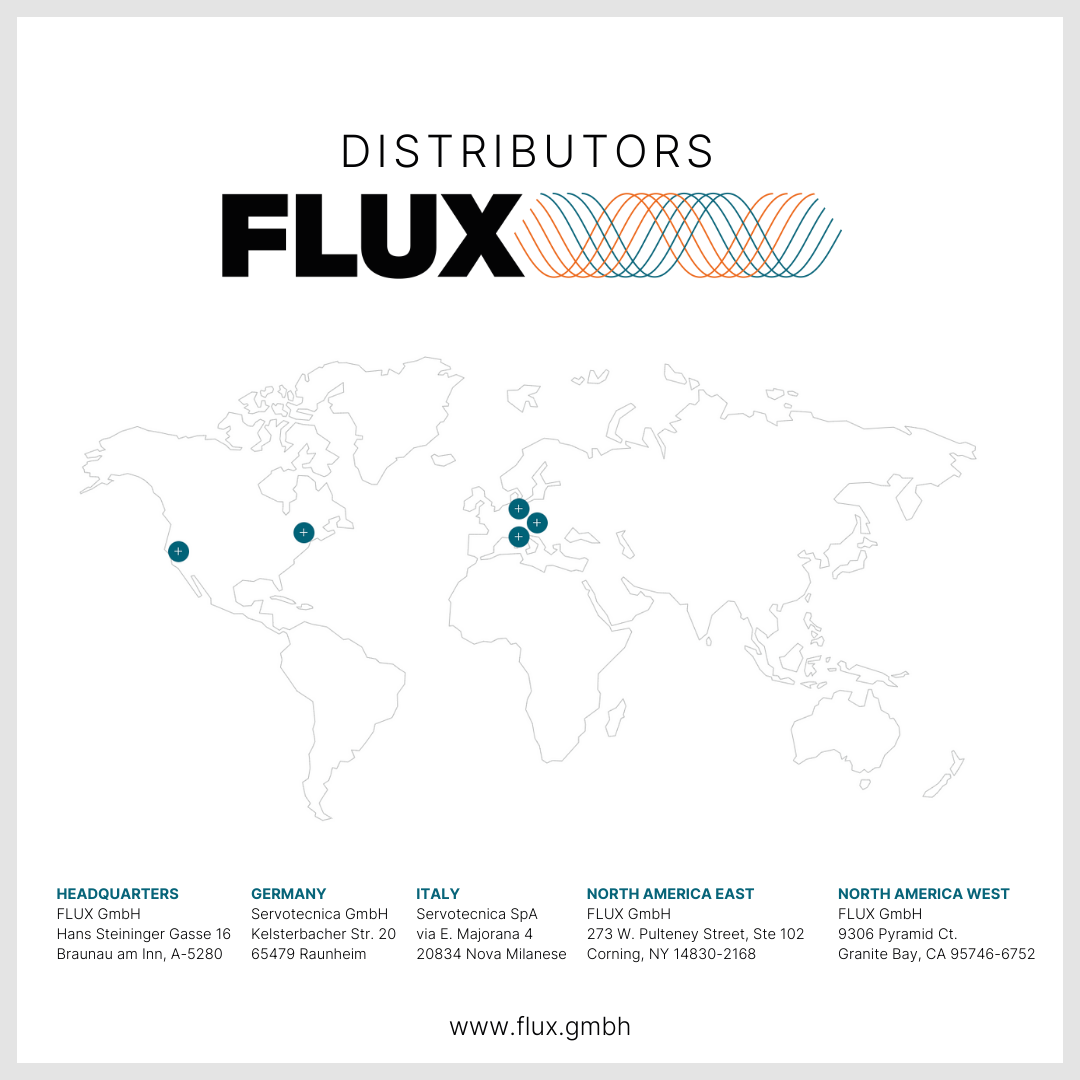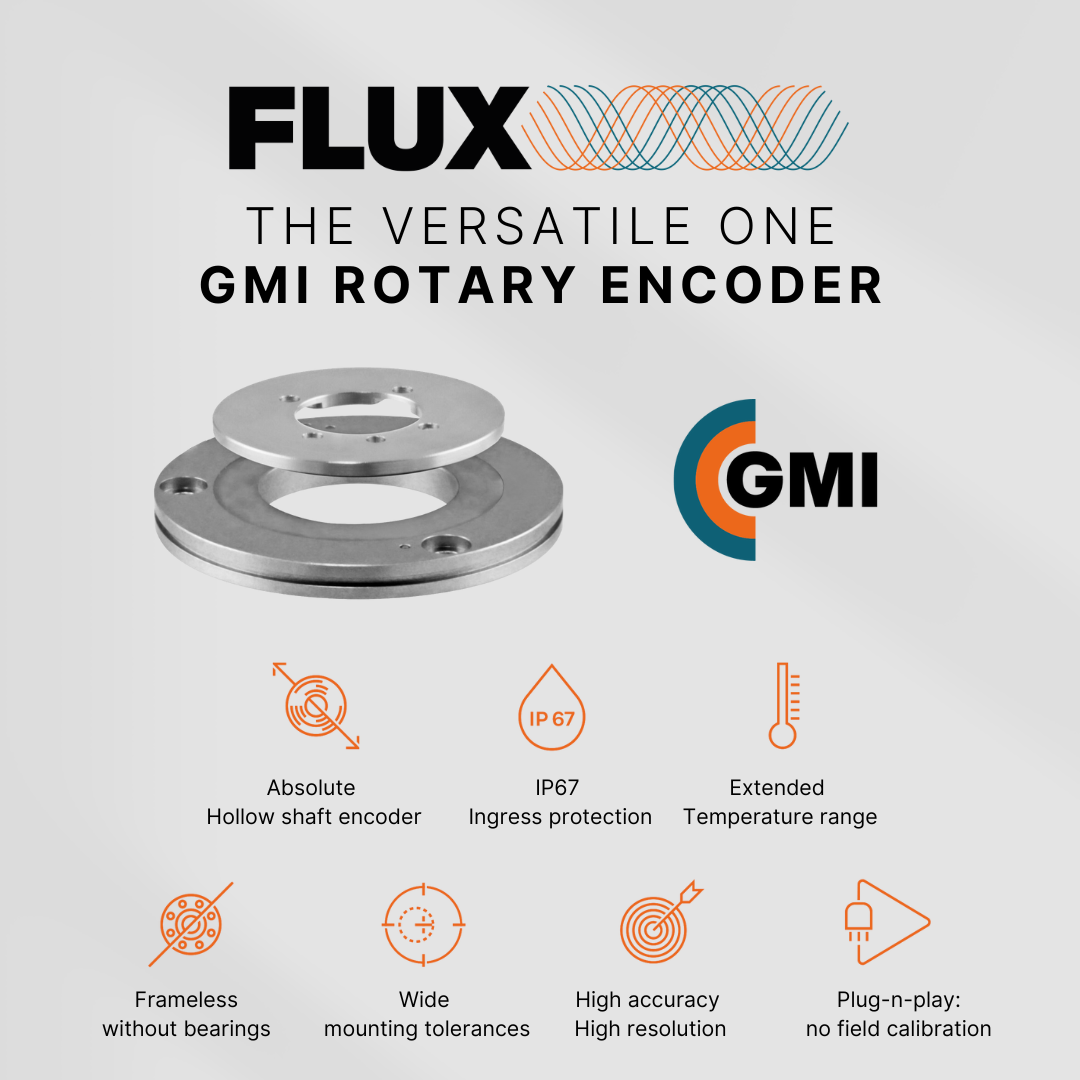Special applications require special solutions – and it is precisely for these cases that Austrian company FLUX GmbH offers unique rotary and linear measuring systems with patented GMI technology to improve performance and usability of currently available market solutions. FLUX encoders impress with high performance and precision. Lightweight and compact, they can be used wherever conventional encoders are not feasible.
Patented Technology & Versatile Functionality
Apart from its technical expertise, FLUX and its engineers have many years of experience designing and manufacturing position encoders based on well-known physical principles, such as optoelectronic, capacitive, and inductive ones. However, all these approaches are severely limited when it comes to encoder accuracy, repeatability, and resolution. Today’s rapid advancements in automation and robotics and the requirement of keeping up with Industry 4.0 encouraged the company’s engineers to develop an advanced method of designing and manufacturing ultra-fast, ultra-light and ultra-flat sensors and encoders to meet future demands of the industry.
Therefore, FLUX sets new standards by offering patented technology in the field of developing and manufacturing rotary encoders and measuring devices which has never been used before: FLUX GMI technology.
Innovative GMI Sensor Technology – High-Tech Made in Austria
Known as the Giant Magento Impedance (GMI) effect, the principle is based on the well-known phenomenon of a drastic change in impedance of certain materials when exposed to magnetic fields. This in turn influences the so-called skin effect, which is caused by applying an alternating current to the GMI material. In this way, a signal can be generated depending on the position between the sensor (FLUX GMI Foil) and the scale (external magnetic field). By utilizing the GMI effect in a pioneering manner to determine position, FLUX GmbH provides its customers with significant added value through the design and manufacture of innovative encoders.
The patented FLUX GMI technology combines the high-precision performance of an optical encoder with the robustness of an inductive encoder and the large mounting tolerance and working range of a magnetic encoder. Furthermore, they work without hysteresis and provide real-time position detection; that is, the current location is always available without delay. All in all, FLUX encoders differ from conventional measuring principles by delivering the best of all worlds in one encoder: outstanding performance, excellent precision, and small and narrow where conventional encoders are too large and heavy.
As a result, the efficiency of previous encoder systems is combined in a single device, resulting in a reduction of total costs for implementation related to energy use, installation, integration, operation, and maintenance. The founder and CEO, Paul Tutzu, sums it up as follows: “The fast pace of technical progress and constantly changing framework conditions call for high flexibility. By using FLUX encoders, we guarantee our customers maximum adaptability and reliability while providing added value through superior technical performance.”
Holistic Approach and Unlimited Applications
Besides the advantages already mentioned, the FLUX GMI technology has a lot more to offer and may be used in a wide range of applications. Due to the large working range and excellent signal-to-noise ratio, the encoders perform at highest resolution across a wide range of work areas while maintaining large assembly tolerances. The compact size of the sensors allows the encoder to be integrated into even the most space-constrained applications, such as joint assemblies for cobots. The frameless design of the encoder eliminates any additional static or rolling friction in the system.
Because of the encoder’s holistic design, the sensor is not limited to scanning only segments, but rather scans the entire measuring ring for 360° rotation. In contrast to one-point scanning performed with optical or magnetic encoders, the FLUX GMI encoder is highly resilient to inaccuracies like eccentricities and lateral displacements. Since it is a real-time encoder, it provides a position that is independent of a calculation time. Every time the encoder receives a position query, it is ready to transmit the current position directly and without time uncertainty (jitter) to the controller. Therefore, a real-time encoder from FLUX offers the same level of accuracy at low and high speeds and is consequently suitable for applications that require speed or torque control. Furthermore, they can also be used as load and motor encoders for all types of robot applications, such as compact and slim collaborative robots. These advantages are equally useful in slip rings and motor applications, such as brushless DC motors or stepper motors. Machine tools or so-called “gimbals”, which are intended to keep the moving camera steady in e.g., camera mounts and drones, are also relevant areas of application.
The current FLUX GMI product portfolio includes the GMI-ANGLE and GMI-ROTARY series in various sizes and designs. Their unique characteristics make them an appropriate choice for applications with high demands that cannot be met by conventional encoders. Furthermore, a series of rotary encoders based on an inductive PCB design is available to complement the existing product line. Compact and lightweight, the IND-ROTARY encoder is ideal for applications that require high performance in small spaces.
As of now, the first generation of FLUX encoders is available on the market and is being successfully used in applications that require positional, speed, and torque control. With its headquarters located in Braunau am Inn, Austria, FLUX offers its customers a worldwide network of experienced distributors and sales partners in the field of encoder technology.
If you are interested in further information about FLUX and its innovative products, please find your appropriate contact person here.

